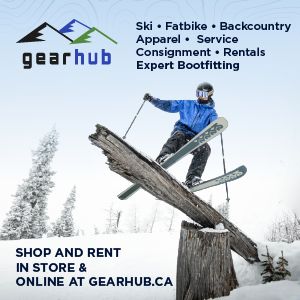
In early October, Elk Valley residents awoke to remarkable news — the Nature Conservancy of Canada (NCC) had finalized its purchase of more than 45,000 hectares (110,000 acres) of forest and backcountry terrain across the valley and into the East Kootenays. Representing roughly one-third of all private land in the Elk Valley, many conservationists are calling the acquisition the most significant step forward for regional conservation in decades — and it’s not hard to see why.
These lands, long known as the Kootenay Forest Lands, are rich in ecological, cultural, and recreational value. Situated in the heart of ʔamakʔis Ktunaxa, the area forms part of one of the most critical wildlife corridors in the southern Canadian Rockies — home to grizzly bears, wolves, elk, lynx, and countless other species. Yet, for decades, these lands have been privately managed and subject to intensive logging under a succession of industrial owners including Jemi Fibre Corp, CanWel, and most recently, Doman Building Materials.
Now, under the NCC’s stewardship, there is a real opportunity for renewal. The organization has already stated its intent to work collaboratively with the Yaq̓it ʔa·knuqⱡi’it First Nation and local partners to restore and steward the land.
“Minimally regulated private land logging activity has taken a heavy toll on these lands over the last decade,” said Casey Brennan of Wildsight. “Through restoration, reforestation, invasive plant control and protection of remaining intact forests, our hope is that a greater balance will be achieved.”
Connecting the Rockies — From Alberta to Montana
The NCC’s purchase strengthens an expansive network of protected areas stretching from Alberta’s Crowsnest Pass to Montana’s northern Rockies — a landscape often called the ‘Backbone of the World’ by the Blackfeet Nation. This vast, ecologically rich region is part of several major transboundary conservation efforts, including Yellowstone to Yukon and the Crown of the Continent.
On a local scale, the acquisition connects the Flathead Valley and Wigwam River to the south with the upper Elk Valley, Elk Lakes, Height of the Rockies, and Kananaskis Country Provincial Parks to the north. In an area long shaped by coal mining, forestry, and transportation corridors, the Kootenay Forest Lands will now act as a critical refuge — helping wildlife move safely through the landscape and sustain viable populations.

Healing the Forest
Despite decades of clearcutting, pockets of ancient and mature forests remain, alongside huckleberry-rich slopes and grasslands that support ungulates like elk, deer, and bighorn sheep. These lands also feature rare high-elevation grasslands and cottonwood stands, vital for wildlife survival in winter.
The NCC’s restoration vision includes reforesting logged areas with native species such as western larch, Douglas fir, ponderosa pine, subalpine fir, and whitebark pine. It also plans to use selective harvesting as a tool to restore forest health and reduce wildfire risk. Early estimates suggest that the natural regeneration of these forests could sequester 370,000 tonnes of CO₂e annually — a powerful contribution to climate resilience.

Water, Wildlife, and Community
More than 930 kilometres of streams flow through these lands, feeding into the Elk River, Coal Creek, and Flathead watersheds — lifelines for both wildlife and people from Fernie to Montana. Heavy logging and road construction over the past decade have altered hydrological patterns, degraded fish habitat, and increased flood risk.
“Coal Creek’s watershed has been hit especially hard,” said Brennan, noting how data from the Elk River Alliance shows that streams like Lizard Creek — with less disturbance — weathered the 2021 atmospheric river event far better. With reforestation and flood mitigation efforts, NCC hopes to stabilize slopes and restore natural water flow over time.

Access and the Future of Recreation
For many in the Elk Valley, these lands are not just wild spaces — they are beloved backyards. From hiking and mountain biking to snowmobiling and hunting, the Kootenay Forest Lands see thousands of recreational users each year. When the NCC announcement broke, local reaction was overwhelmingly positive but tinged with concern about access.
The NCC has confirmed that current closures remain in place for now, but it intends to work with local recreation, hunting, fishing, and motorized-use groups to develop a plan that balances access with conservation.
As Brennan puts it, “This is our chance to get it right — to protect what’s left, restore what’s been lost, and build a new model for how people and nature can thrive together in the Elk Valley.”
For the first time in a generation, the Kootenay Forest Lands can begin to heal. And with collaboration, stewardship, and respect, this new chapter could redefine the future of conservation and recreation in the southern Rockies.
Source: Wildsight.ca


























